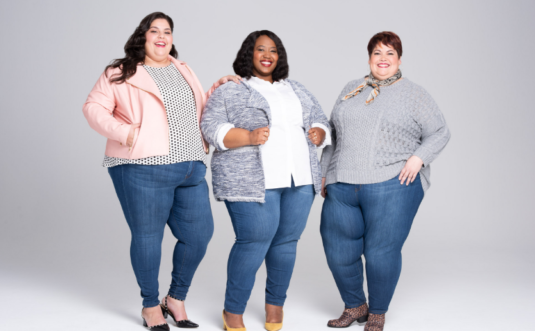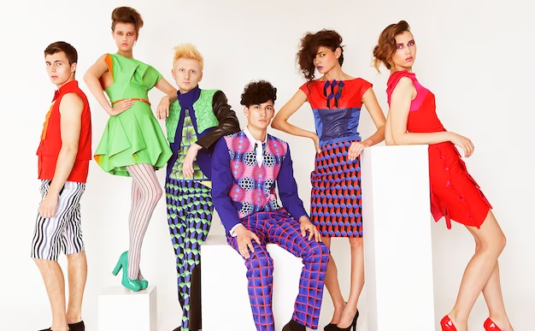In the heart of the bustling metropolis that is New York City, a silent revolution is taking place—one that intertwines fashion, environmental consciousness, and the city’s unique vibrancy. As we navigate the challenges posed by climate change and resource depletion, innovative solutions are emerging to tackle these global concerns at a local level. Enter the world of clothing recycling in NYC, a movement that not only addresses the mounting waste generated by the fashion industry but also encourages a shift towards more sustainable and conscious consumer habits.
In this article, we delve into the dynamic landscape of clothing recycling in the Big Apple, exploring the initiatives, organizations, and individuals that are reshaping the way we think about clothing, consumption, and the lifecycle of fashion. From upcycled runway designs that redefine haute couture to community-driven swap events that foster a sense of togetherness, we uncover the multifaceted dimensions of this transformative movement.
Why Recycling Clothing is Essential
Fashion trends come and go, and with them, mountains of clothes are discarded. However, the consequences of this “throw-away” mentality are dire for the environment, the economy, and even society. This makes the act of recycling clothing not just a choice, but a necessity.
Environmental Impact of Clothing Waste
Resource Conservation: Clothing production requires vast amounts of resources.
- Water: It takes approximately 2,700 liters of water to produce a single cotton t-shirt, equivalent to what an average person drinks over a 900-day period;
- Energy: From cultivation to production, a significant amount of energy is used in generating a piece of clothing.
Landfill Overflow:
- A majority of discarded clothing ends up in landfills. Synthetic materials like polyester can take hundreds of years to decompose, adding to the already bursting landfills;
- When organic materials decompose, they produce methane, a greenhouse gas more potent than carbon dioxide.
Chemical Pollution:
Dyeing, treating, and producing clothing involves chemicals, some of which can be hazardous. When improperly discarded, they can leach into the soil and water systems.
Economic Benefits of Recycling Clothing
Job Creation:
- Recycling and upcycling industries can generate employment opportunities in sorting, repairing, and repurposing clothes.
Reduced Production Costs:
- Utilizing recycled fibers or upcycled materials can be more cost-effective than producing new ones from scratch.
Waste Management Savings:
- Recycling reduces the need for landfills and incineration, which in turn, saves on waste management costs.
Societal Advantages
Support for Vulnerable Communities:
- Donated clothing can support underprivileged sections of society, providing them with essential clothing items.
Promotion of Sustainable Values:
- When society prioritizes recycling, it encourages more sustainable consumption patterns, promoting a culture of responsibility and consciousness about resources.
Recommendations for Effective Clothing Recycling
Clothing Swaps:
Organize or participate in local clothing swap events. It’s an excellent way for people to refresh their wardrobes without buying new items.
Upcycling:
Turn old clothes into new treasures. A torn t-shirt might find a new life as a cleaning rag, or old jeans could be repurposed into a stylish tote bag.
Donations:
Consider donating gently used items to charitable organizations. Ensure the clothes are clean and in good condition.
Purchase Wisely:
Opt for quality over quantity. High-quality items might have a higher upfront cost but tend to last longer, reducing the need for frequent replacements.
Educate & Advocate:
The more people know about the importance of recycling clothing, the more they’ll be inclined to participate. Use social platforms, community events, or even casual conversations to spread the word.
A Comprehensive Guide to Recycling Clothing and Accessories
1. Assess the Condition of Your Items
Before deciding the fate of an item, conduct a thorough evaluation. If clothing or accessories show significant signs of wear, are discolored, or have sustained damage, they may not be ideal for donation. Instead, consider the recycling option. Keep in mind, the goal is to minimize waste and maximize utility.
2. Consider the Responsibility of Donation
When donating, it’s paramount to ensure the items are in salable or usable condition. Many smaller donation centers struggle with the influx of unusable garments, which can lead to unnecessary burdens. These centers often lack the means to dispose of unsellable items, which not only contradicts the objective of sustainable waste management but also imposes financial strains on these institutions.
3. The Right Approach for Unsalvageable Items
Certain items, like worn-out gym shirts, old socks, or used underwear, may not be suitable for donation. In such cases, recycling becomes the preferred choice. Many cities, including New York, provide numerous drop-off bins for textile recycling through organizations like the Sanitation Department, Helpsy, and Green Tree. It’s beneficial to check the accepted item list at your nearest recycling point to ensure a smooth process.
4. Broaden Your Recycling Horizons
Many organizations facilitate clothing recycling. Grow NYC, for instance, has periodic collections across the city throughout the year. Additionally, Wearable Collections has made it convenient for residents by placing recycling stations at various farmers’ markets and a dedicated spot in Brooklyn. Astoria residents have the additional option of Scrap, which even offers pick-up services.
5. Engage Your Community in Sustainable Practices
Why embark on the journey to sustainable living alone? Rally your neighbors, colleagues, or even your entire building and initiate a recycling drive. For those in New York, RefashionNYC or Green Tree provide recycling bins upon request. With collective effort, not only can more items be saved from the landfill, but a stronger sense of community can be fostered through shared sustainable goals.
Empowering Lives Through Clothing Donations: A Guide to Three Impactful Nonprofits
Housing Works: A Lifesaving Initiative for Homeless and Marginalized Individuals
Housing Works, headquartered in New York City, is a dedicated non-profit organization actively battling against AIDS and homelessness. By donating, individuals play a pivotal role in ensuring the continued provision of essential services to those who are homeless, living on low incomes, or have been pushed to society’s margins. This includes men, women, and the youth who desperately require aid. Housing Works operates thrift stores situated in Manhattan and Brooklyn. Individuals wishing to contribute can deposit all sorts of clothing at these stores during operational hours. Supporting Housing Works means standing against homelessness and helping a vulnerable population regain their dignity.

Dress for Success: Empowering Women through Professional Attire
Dress for Success is not just a global nonprofit, but a movement that believes in empowering women. By providing low-income women with professional attire, Dress for Success supports their journey to secure employment. This goes beyond just clothing—it’s about boosting confidence and equipping women for job interviews and professional environments. To contribute to this noble cause, individuals can donate new or lightly worn business attire at designated locations in Manhattan or Queens. By aiding Dress for Success, you’re helping create an environment where every woman can visualize and achieve economic independence.
Career Gear: Equipping Men for Success in Work and Life
Professionalism is not just about skills and qualifications but also presentation. Career Gear understands this and stands as a national beacon, offering not only professional clothing but also essential mentoring and life-skills training. Their mission is clear: to assist men in poverty to rise, contribute meaningfully to their families, and play an active role in their communities. Donors can contribute by gifting new or gently worn business and business-casual attire. Career Gear has set specific monthly collection dates at their Manhattan location for this purpose. Supporting Career Gear means investing in a man’s journey to redefine his life and contribute positively to society.
Eco-Fashionable Recycling Options
Wearable Collections: Comprehensive Clothing Recycling
Located in the bustling heart of New York City, Wearable Collections operates with a clear mission – the goal of reducing waste by ensuring that apparel, textiles, and footwear don’t end up in landfills. Not only does this contribute to environmental sustainability, but it also aids in fundraising for various charitable endeavors. New Yorkers can easily contribute by heading to one of the many green markets scattered across the city’s boroughs and depositing their old or unwanted clothes. For those looking for even more convenience, there’s an option to schedule a pick-up right from their doorstep, although it’s essential to note that there’s a bag minimum which varies by borough.
H&M: Global Clothing Repurposing Initiative
H&M is not just a global fashion giant; it’s also at the forefront of sustainability in the apparel industry. In an effort to promote eco-friendly practices, H&M outlets worldwide have introduced special collection bins for garments and textiles. These bins are designed to accept items from any brand and in any state, be it worn, torn, or brand new. In recognition of the customers’ environmentally conscious efforts, H&M offers a unique perk. Every time patrons deposit their old textiles into these collection bins, they receive a special voucher, making sustainability even more rewarding.
Blue Jeans Go Green: Denim’s Second Chance
Every pair of denim jeans has a story, and with the Blue Jeans Go Green™ initiative, that story can continue even after they’re no longer worn. This innovative program is specifically tailored to collect denims, which primarily consist of cotton, and then reintroduce them into the recycling cycle. By reverting the denim to its original fiber state, it paves the way for the creation of brand-new products, ensuring that the cycle of sustainability remains unbroken. For those keen on contributing their old jeans, several retailers, including popular names like Madewell and American Eagle, have partnered with the program. Alternatively, denim owners can opt to send their jeans via mail, ensuring a hassle-free participation process.
Unlocking the Resale Revolution
The RealReal: A Gateway to Luxury Resale
The RealReal stands as a premier consignment platform catering specifically to aficionados of luxury goods for both men and women. Prospective sellers should be mindful to ensure their items hail from an approved designer list. A notable perk is the hassle-free logistics; The RealReal offers two convenient options for consignors. Firstly, there’s the complimentary in-home pickup service. Alternatively, a prepaid shipping label can be availed, allowing sellers to dispatch their items without any financial burden. The company shines in its aftercare; professionals meticulously photograph and list each item, ensuring they’re showcased in the best light. Once an item is successfully sold, sellers receive their payment seamlessly, simplifying the luxury consignment process.
Vestiaire Collective: An International Fashion Hub
Vestiaire Collective has carved a niche for itself as a distinguished, global peer-to-peer platform, championing both high-end and contemporary women’s fashion. Unlike many of its counterparts, this platform urges sellers to be at the helm of their sales journey. This includes capturing aesthetically pleasing photographs and crafting compelling listings. While this does necessitate a bit more effort, the upside is substantial. Sellers can anticipate a more substantial profit share, making the initial effort worthwhile.
Poshmark: The Universal Fashion Marketplace
Poshmark serves as an all-encompassing digital bazaar, welcoming sellers and buyers primarily from the United States. The platform embraces a wide array of categories, from everyday clothing to shoes and even chic accessories. What sets Poshmark apart is its user-friendly mobile application, which streamlines the process of photographing, listing, and managing items. Its expansive and diverse user base ensures that both new and pre-loved items find a new home swiftly.
Beacon’s Closet: The Vintage Maven’s Haven
Beacon’s Closet isn’t just any vintage store. Boasting multiple outposts in Manhattan and Brooklyn, this brick-and-mortar establishment has become a mecca for vintage lovers. Unlike many traditional stores, Beacon’s Closet operates on a unique model. They’re open for business every day of the week, allowing sellers to walk in with their vintage or contemporary fashion pieces. Transactions aren’t limited to sales; they also offer a trade option, giving sellers an opportunity to swap their pieces for something novel and exciting. The blend of vintage and modern inventory ensures that every visitor finds something that resonates with their fashion sensibilities.
Conclusion
In conclusion, the efforts towards clothing recycling in New York City represent a crucial step in addressing the environmental and social challenges posed by the fashion industry. Through innovative initiatives and partnerships, such as drop-off locations, collection programs, and collaborations with local businesses, the city has made significant strides in diverting textile waste from landfills and promoting a more sustainable approach to fashion consumption.
Clothing recycling not only reduces the strain on landfills but also conserves valuable resources, minimizes pollution, and supports local communities. By encouraging residents to participate actively in recycling programs and educating them about the benefits of responsible fashion choices, NYC has fostered a growing awareness about the environmental impact of clothing production and disposal.




